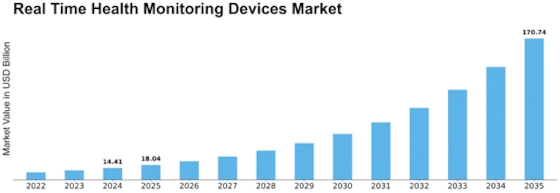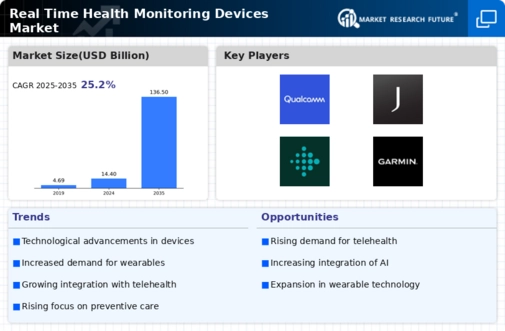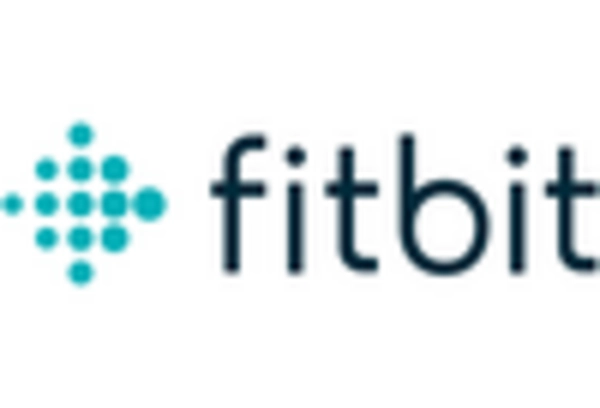Real Time Health Monitoring Devices Size
Real Time Health Monitoring Devices Market Growth Projections and Opportunities
The market for devices that monitor our health in real time is growing quickly. These devices come in different types, and one of the most popular ones is wearable devices. In 2015, wearable devices, like fitness bands and smart clothing, made up the largest part of this market. The value of this market was $16,192.9 million in 2015, and it's predicted to reach a whopping $39,794.6 million by 2022.
Among wearable devices, fitness bands were the leaders in 2015, making up the biggest share of the market. Their value was $5,972.9 million in 2015, and it's expected to climb to $14,900.9 million by 2022. Another rapidly growing category in this market is smart clothing, which is predicted to increase by 14.39% every year from 2016 to 2022.
The home health medical devices segment is also making significant strides in real-time health monitoring. This category is the fastest growing, with a Compound Annual Growth Rate (CAGR) of 14.75% expected between 2016 and 2022. In this segment, connected devices used at home are becoming increasingly popular.
Glucometers, which monitor blood sugar levels, held the largest share of the connected home health medical devices market in 2015. The value of this segment was $4,796.3 million in 2015, and it's projected to reach $12,493.8 million. The fastest-growing category in this segment is pulse oximeters, devices that measure oxygen levels in the blood. This category is anticipated to grow at a CAGR of 15.10% during the forecast period from 2016 to 2022.
These advancements in real-time health monitoring devices are not just about numbers; they represent a shift in how we take care of our health. Wearable devices, such as fitness bands and smart clothing, make it easier for individuals to keep track of their health on a daily basis. Meanwhile, connected home health medical devices, like glucometers and pulse oximeters, bring the convenience of monitoring vital health metrics from the comfort of one's home.
The growing market for these devices indicates a broader trend toward proactive health management. People are increasingly recognizing the importance of staying informed about their health in real time, and these devices provide the tools to do so conveniently. As technology continues to advance, we can expect even more innovative and user-friendly devices that empower individuals to take control of their health.


















Leave a Comment